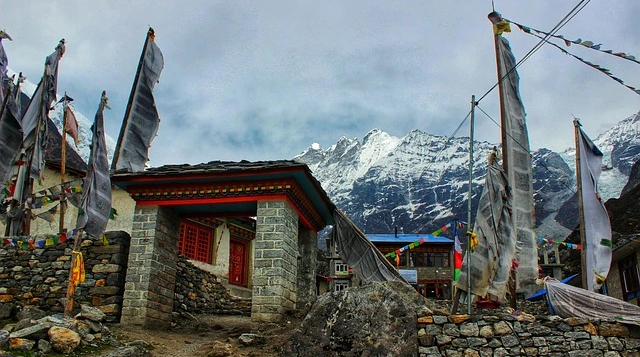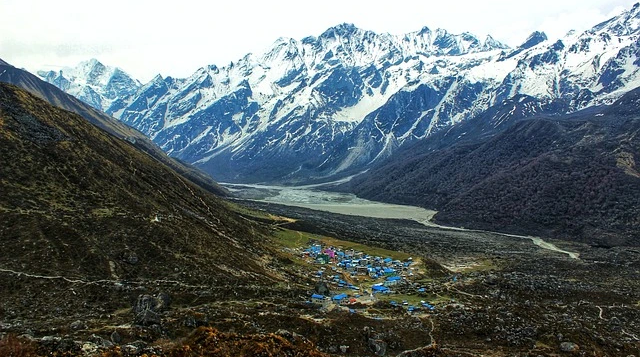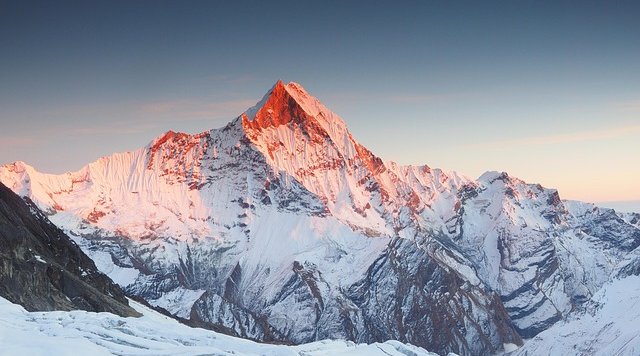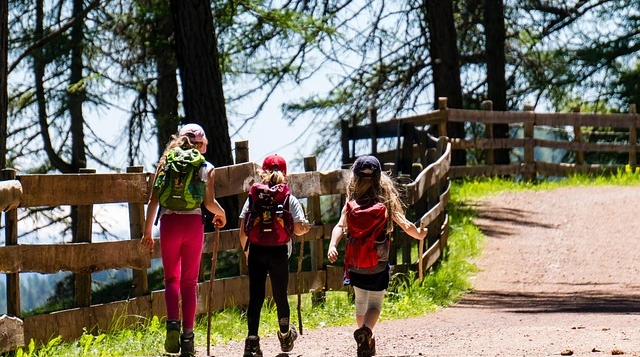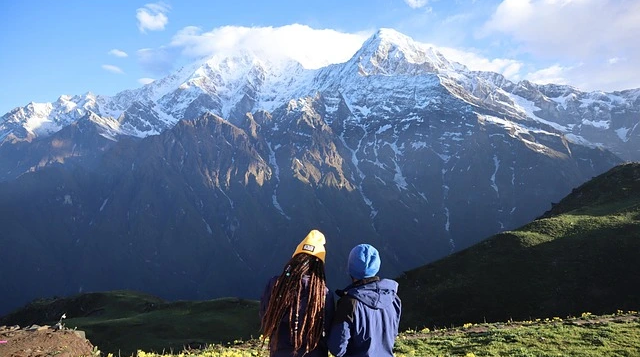Introduction
Planning an Everest Base Camp trek in June might seem unconventional, but this summer month offers a surprisingly rewarding experience for adventurous trekkers. While most people avoid the monsoon season Everest Base Camp trek, June presents unique opportunities that savvy travelers are beginning to appreciate.
June marks the beginning of Nepal's monsoon season, bringing both challenges and unexpected benefits. The Everest Base Camp trek experience differs dramatically from the crowded spring and autumn seasons, offering solitude, lush landscapes, and significantly lower costs. However, success requires careful planning and realistic expectations about weather conditions.
This comprehensive guide will help you understand everything about the Everest Base Camp trek in June, from weather patterns to essential preparation tips, ensuring you make an informed decision about your Himalayan adventure.
Understanding June Weather Conditions
The Monsoon Reality
June Everest Base Camp weather is characterized by the onset of monsoon conditions, but it's important to understand that the high-altitude regions experience different patterns than lower elevations. While the southern slopes receive heavy rainfall, the Everest region sits in a rain shadow, receiving less precipitation than many expect.
Key weather characteristics in June:
- Temperature range: 10-15°C (50-59°F) during the day at Base Camp
- Rainfall: Moderate to heavy below 4,000m, lighter above
- Visibility: Often clearer in early morning and late afternoon
- Humidity: Higher than in other seasons, especially in lower regions
Daily Weather Patterns
The Everest trek in June conditions follows predictable daily patterns. Mornings typically start clear and dry, making them ideal for trekking. Afternoon clouds build up, often bringing rain or snow depending on altitude. Evenings may clear again, offering stunning mountain views.
Understanding these patterns helps trekkers optimize their daily schedules, starting early to avoid afternoon precipitation and maximize clear weather windows for photography and mountain viewing.
Advantages of June Trekking
Fewer Crowds and Authentic Experience
One of the most significant benefits of an Everest Base Camp trek in June is the dramatic reduction in crowds. While peak seasons see hundreds of trekkers daily, June offers a more intimate experience with the mountains and local communities.
Crowd benefits include:
- Easier accommodation booking - No need for reservations
- More personal interactions with local Sherpas and guides
- Peaceful trekking experience without trail congestion
- Better photography opportunities without crowds in shots
Cost Advantages
The Everest Base Camp trek in June costs significantly less than peak seasons. Tour operators offer substantial discounts during the monsoon period, making this iconic trek more accessible to budget-conscious travelers.
Typical cost reductions:
- 20-30% lower trek packages compared to spring/autumn
- Reduced accommodation costs in teahouses
- Discounted guide and porter services
- Lower flight costs to and from Lukla
Unique Landscape Beauty
The monsoon season Everest Base Camp trek reveals a different side of the Himalayas. The landscape transforms into a lush, green paradise in lower elevations, while higher altitudes maintain their stark, dramatic beauty.
Scenic highlights:
- Vibrant rhododendron forests in full bloom
- Cascading waterfalls throughout the lower trail
- Dramatic cloud formations creating mystical atmospheres
- Crystal-clear air after rain showers
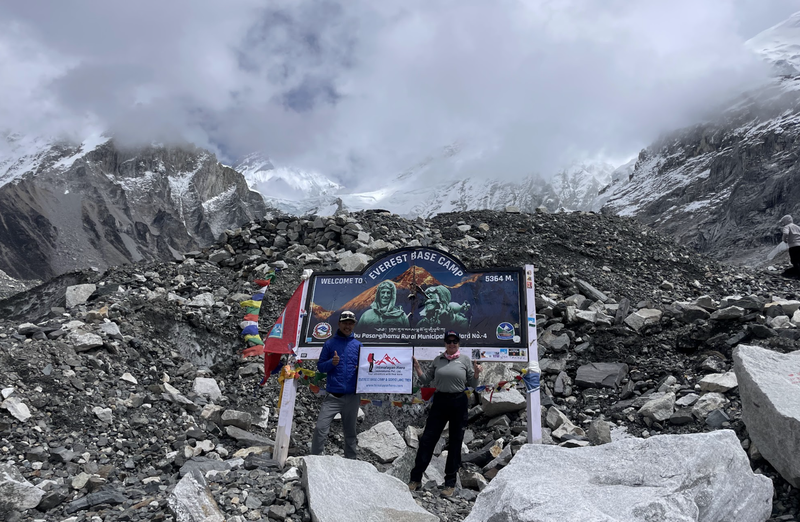
Challenges and Considerations
Weather-Related Difficulties
While June offers unique advantages, the Everest trek monsoon season presents specific challenges that require preparation and flexibility.
Primary challenges:
- Flight delays to and from Lukla due to weather
- Muddy and slippery trails in the lower sections
- Reduced mountain visibility during peak cloud periods
- Higher humidity affects comfort levels
Is the Everest Base Camp Trek Safe in Monsoon?
Safety remains a primary concern for June trekkers. The monsoon Everest Base Camp trek requires additional precautions but remains feasible with proper preparation and experienced guides.
Safety considerations:
- Increased landslide risk on lower trail sections
- Slippery conditions require proper footwear
- Altitude sickness remains a concern regardless of season
- Weather evacuation challenges due to flight restrictions
Trail Conditions
The Everest Base Camp trek in June difficulty varies significantly by elevation. Lower sections become more challenging due to mud and moisture, while higher elevations may be easier due to less extreme cold.
Trail condition breakdown:
- Lukla to Namche (2,800-3,440m): Muddy, slippery, lush vegetation
- Namche to Tengboche (3,440-3,867m): Mixed conditions, occasional rain
- Tengboche to Base Camp (3,867-5,364m): Drier, clearer, typical high-altitude conditions
Essential Preparation Tips
How to Prepare for the Everest Trek in Summer
Preparing for a summer Everest Base Camp trek requires modifications to standard preparation routines. Physical fitness remains crucial, but equipment and mental preparation need adjustments for monsoon conditions.
Physical preparation:
- Cardiovascular training - Focus on endurance in humid conditions
- Strength training - Emphasize leg strength for muddy terrain
- Altitude preparation - Consider altitude training if available
- Flexibility training - Yoga helps with balance on slippery surfaces
Packing List Everest Base Camp Monsoon
Your packing list for Everest Base Camp monsoon season requires specific additions and modifications compared to dry season trekking.
Essential monsoon gear:
- Waterproof hiking boots with excellent grip
- Multiple rain layers - jacket, pants, and pack covers
- Quick-dry clothing - synthetic materials over cotton
- Waterproof gloves and spare dry pairs
- Trekking poles for stability on wet surfaces
- Headlamp with extra batteries for early morning starts
- Waterproof stuff sacks for electronics and clothes
Mental Preparation
June trekking requires mental flexibility and patience. Weather delays are common, and itineraries may need adjustments. Embrace the adventure's unpredictable nature and maintain a positive attitude toward challenges.
Mental preparation tips:
- Expect delays and build buffer time into your schedule
- Embrace flexibility - weather may dictate daily plans
- Focus on unique experiences rather than perfect conditions
- Prepare for solitude - enjoy the peaceful trekking experience
Best Practices for June Trekking
Optimal Daily Schedule
Successful Everest Base Camp trek in June requires adapting to daily weather patterns. Start early to maximize clear weather windows and avoid afternoon precipitation.
Recommended daily schedule:
- 5:00 AM: Wake up, quick breakfast
- 6:00 AM: Begin trekking in clear conditions
- 12:00 PM: Reach daily destination before clouds build
- 1:00 PM: Lunch and rest during peak cloud period
- Evening: Enjoy clear skies and mountain views
Accommodation Strategy
June's reduced crowds mean accommodation flexibility, but choosing the right teahouses enhances your experience.
Accommodation tips:
- Book day-of-arrival - reservations unnecessary
- Choose higher-elevation lodges when possible
- Prioritize lodges with good drainage and covered areas
- Select rooms facing the mountains for better views
Photography Opportunities
The monsoon season Everest Base Camp trek offers unique photographic opportunities that peak season visitors miss.
Photography tips:
- Early morning light provides the best mountain visibility
- Dramatic cloud formations create stunning atmospheric shots
- Lush foregrounds contrast beautifully with stark peaks
- Waterfall photography opportunities abound in the lower sections
Cultural Immersion Benefits
Authentic Local Interactions
June's reduced tourist presence allows for more meaningful cultural exchanges with local Sherpa communities.
Cultural benefits:
- Extended conversations with lodge owners and locals
- Participation in local festivals and ceremonies
- Learning traditional customs without tourist pressures
- Supporting the local economy during slower periods
Traditional Practices
Observe traditional monsoon practices and agricultural activities that visitors during peak seasons rarely witness.
Health and Safety Protocols
Altitude Acclimatization
Altitude sickness remains a concern regardless of season, but June conditions may affect acclimatization processes.
Acclimatization tips:
- Maintain standard altitude gain recommendations
- Stay hydrated despite higher humidity
- Monitor symptoms - humidity can mask dehydration
- Consider extra acclimatization days for weather flexibility
Emergency Preparedness
Everest Base Camp trek in June requires enhanced emergency preparedness due to weather-related challenges.
Emergency considerations:
- Evacuation insurance covering weather delays
- Satellite communication devices for remote areas
- Extended medical kit for longer potential delays
- Emergency shelter options for weather emergencies
Conclusion: Is June Right for You?
The Everest Base Camp trek in June offers a unique alternative to traditional trekking seasons. While challenges exist, the benefits of reduced crowds, lower costs, and unique landscape beauty make it an attractive option for flexible, well-prepared adventurers.
Success depends on realistic expectations, proper preparation, and embracing the adventure's unpredictable nature. If you're seeking an authentic, uncrowded Himalayan experience and don't mind occasional weather challenges, June might be your perfect trekking window.
The summer Everest Base Camp trek isn't for everyone, but for those willing to adapt and embrace monsoon conditions, it offers an unforgettable journey to the world's most famous base camp. With proper preparation, flexible scheduling, and the right mindset, your June adventure can be every bit as rewarding as peak season treks.
Remember that the monsoon Everest Base Camp trek requires experienced guides familiar with seasonal conditions. Choose reputable operators with monsoon experience, and don't hesitate to adjust plans based on weather conditions. Your safety and enjoyment depend on making smart decisions throughout your journey.
Whether you're drawn by the cost savings, crowd avoidance, or unique landscape beauty, the Everest Base Camp trek in June promises an adventure unlike any other season. Embrace the challenge, prepare thoroughly, and get ready for an unforgettable Himalayan experience.
Frequently Asked Questions
Q: Is it safe to trek to Everest Base Camp in June?
A: Yes, with proper preparation and experienced guides, June trekking is safe. The main concerns are weather delays and trail conditions, not inherent danger.
Q: How much cheaper is the Everest Base Camp trek in June?
A: June treks typically cost 20-30% less than peak season prices due to reduced demand and operator discounts.
Q: What's the weather like during an Everest Base Camp trek in June?
A: June brings monsoon conditions with morning clarity, afternoon clouds, and occasional rain. Higher elevations remain drier than lower sections.
Q: Are flights to Lukla reliable in June?
A: Flight delays are more common in June due to weather, so build extra buffer time into your schedule.
Q: What special gear do I need for June trekking?
A: Essential monsoon gear includes waterproof clothing, good-grip boots, rain covers, and quick-dry materials. Standard trekking gear still applies.
Contact our expert team to customize your perfect Everest Base Camp experience:



